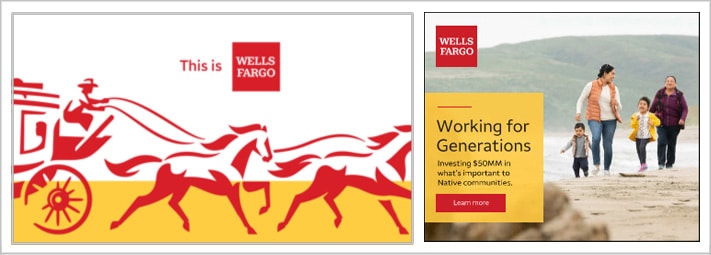Subscribe to Our Newsletter
Each year, agencies and research firms rank the world’s most valuable brands—not only to give marketers bragging rights, but as a key indicator of business strength. Brand value plays a major role in M&A activity, competitive positioning, and long-term growth, shaping how companies are perceived by investors, customers and partners.
Forrester’s 2023 Business Trust Survey reinforces the importance of brand awareness: 77% of B2B purchase influencers consider brand awareness essential to building trust. And in an M&A environment where intangible assets like reputation and recognition drive valuations, that trust creates a strong foundation for growth.
Companies with strong brand awareness are well-positioned to increase market value and expand opportunities. So read on for a discussion of this essential brand metric: what it is and how to build it.
What is Brand Awareness?
For the answer, we turn to David Aaker, a well-known expert on branding. In his book Building Strong Brands, Aaker defines brand awareness as the measure of “both the knowledge and the salience of the brand in the customer’s mind.”
In other words, if a company enjoys high brand awareness, it means a large portion of its target audience recognizes its name and has a good idea of what it stands for and what it offers. It functions as one pillar of brand equity, per Aaker, the other pillars being brand loyalty, perceived quality, and brand associations.
A brand may not always benefit from its brand awareness, however! It’s important to remember that when public beliefs about a brand’s purpose, products, or services are negative, brand awareness may be more of a hindrance than a help.
Aaker points out that how we conceive of brand awareness shouldn’t be tied exclusively to brand names; visuals are equally important when customers try to recall a brand. Studies have shown that three days after we hear information for the first time, we’ll remember about 10 percent of it. However, when we’re shown a picture along with the words, retention goes up to 65 percent. Both visual and verbal cues play a critical role in summoning memories and therefore building brand awareness.
How to Build Brand Awareness with Brand Identity
Carving out a space for a brand in the minds of B2B buyers starts with the fundamentals.
1. Brand naming for brand awareness
Most B2B brand marketers don’t get to choose their brand’s name. However, those who do have a powerful opportunity to position a company for market “stickiness.” Becoming one of an industry’s most-recognized brands takes far more than a catchy name, but when a name deftly balances differentiation with brand messages, it contributes to a clear and positive association in a potential client’s mind.
We’ve written about brand naming best practices, but here are a few elements to keep in mind when you’re naming or renaming:
Category differentiation
There may be nothing new under the sun, but there can be a new name in a B2B industry. While a certain level of alignment with category conventions may be required for entry, a name that is overly generic or eerily similar to a competitor’s will lead to marketing—or legal—challenges.
For example, Texas-based oil refiner Tesoro struggled to get out of the shadows of its larger competitors (particularly that of Valero, another Texas-based petrochemical company, and a larger one.) However, after a comprehensive rebrand that resulted in a new name—Andeavor—it was acquired by Marathon Petroleum for over $20 billion. This represented a 24 percent premium for investors, higher than industry standard during that period.
Evocative or descriptive naming
While of course there are exceptions to the rule (Apple comes to mind), names will generally be more memorable to the market when they have some discernible connection to a company’s products, services or mission. A great name need not be a dictionary word, but it should communicate a tie to what the company does or believes.
The startup field is notorious for missing the mark with names that seem to have no links to the companies they represent. Fwix, Cuil, and Gravee are just three examples of start-ups with names that are incomprehensible to the general public. Notably, all three have either gone under or renamed.
That said, many (former) startup names that enjoy high brand awareness today (think Google, Amazon and Instagram) manage to be playful while still salient. They gambled that their offering was so innovative and differentiated that they could imbue their name with meaning … and they were right.
Alignment with brand
Closely related to the previous point, the message or atmosphere that a name expresses should align with the brand’s unique purpose and personality. A name may accurately reflect what a company does—say, Professional Logistics, Inc.—but preferably, it should also reflect the values and culture of the company. If a logistics firm is known for its skill in high-pressure situations, for example, the name might connote speed and precision.
While these tips may help develop a name that builds brand awareness, it’s important not to rush into a renaming project rashly. A legacy name that carries even a moderate amount of brand awareness is still a tremendous asset when potential customers are creating vendor shortlists.
2. Visual design for brand awareness
Because visual cues increase the ability to recall information, a company needs a consistent and distinctive design language. Logo lockups go a long way in this department, but they shouldn’t be introduced in a vacuum.
Whenever possible, visual communications should share common design elements: color palettes, icons, typography, etc. To illustrate the difference between a distinctive visual identity—one that helps build brand awareness—and a less effective one, let’s compare those of Wells Fargo and U.S. Bank.
A visual audit of major American banks produces a sea of red, white, and blue, including two of the top five largest banks (Bank of America and Citibank). With so many financial institutions embracing the same palette, it’s hard for any of them to stand out visually.
One such bank is U.S. Bank, which historically has held less than a quarter of the assets of the red, white and blue banks previously listed. While Bank of America and Citi have the national presence and legacy brand awareness to pull off an undifferentiated visual system, the regional U.S. Bank is missing an opportunity to assert a unique place in the consumer mind.
Look at the ads below: if logos were omitted, would you be able to immediately tell whose was whose?
Wells Fargo’s logo and other design elements, on the other hand, are unique and iconic. Its combination of red and gold (no blue!) is not used by any other of the top 20 largest banks, and its stagecoach graphic is instantly recognizable and a reminder of its pioneer heritage. Many of us would be able to identify the bank from its stagecoach alone.
Wells Fargo’s visuals have helped it achieve high brand awareness (something it may now bemoan in the wake of scandals).
On a practical note: for an icon to be instantly recognizable as belonging to a certain brand, it needs to be recognizable in general. When designing a visual system, it’s important to consider a mark’s reproducibility.
Logos and colors should be clear when large and small, when on-screen and off, printed on paper or a T-shirt. These concerns have become more pressing in the mobile age: visuals must work as small app icons, so brands need responsive logos that can be scaled up or down as needed depending on medium and available space.
3. Taglines for brand awareness
B2B taglines are less popular than they once were, but when they are used thoughtfully, they are a concise expression of a brand, and an effective way to quickly communicate its unique value proposition. Thus, combining a good tagline with a brand’s other memory cues—name, logo, imagery—can add to customer recognition.
Some past B2B examples include:
- Accenture: High performance. Delivered.
- Cisco: Welcome to the human network
- GE: Imagination at work
- IBM: Build a smarter planet
These taglines became widely known not only because of their respective organizations’ large marketing budgets, but also because they are meaningful. They stands out in the B2B universe, where too often taglines sound like they came from a generic slogan generator.
In just a few words, these taglines express their companies’ differentiation. For example, Accenture’s emphasizes its executional capabilities while Cisco’s emphasizes its ability to connect people.
By linking their taglines with their brand name in audiences’ minds, these companies enhance brand awareness to include not just simple recognition, but also increased understanding of the brand’s unique strengths.
How to Build Brand Awareness with Brand Marketing
When it comes to marketing for brand awareness, socialization is the name of the game.
Prospective customers should see the company’s name and content frequently and in the right places, so that they come to recognize it as an established and likeable player in its field. “Likability” is key; as we’ve seen, brand awareness can be a burden when it’s paired with widespread negative sentiment.
To build a recognizable and trusted brand, companies need more than visibility—they need to demonstrate their brand through humanizing action. Brand behavior comes to life through customer interactions, employee engagement, and public messaging. Social media, events, and content marketing help reinforce these behaviors, ensuring the brand isn’t just seen, but consistently experienced as something beyond a faceless entity.
Online sociability alone is an invaluable tool. Not only does it provide free exposure, it also carries with it each sharer’s implicit recommendation of the company.
Every marketer’s dream, of course, is that their company content goes viral, bringing with it a surge in positive brand awareness. Virality may be difficult to achieve, but you can certainly get closer to it by making social media posts and content marketing easy to share. On social media platforms such as LinkedIn or X, consider posts that are visually appealing, like infographics, videos,or featured quotes. On your own site, make sure that you include social sharing links so your content can launch its viral journey right from your URL.
Targeting is vital to the success of any content marketing initiative. To make sure you are raising brand awareness among the right audiences, define those audiences as precisely as possible. Tailoring strategies for a smaller audience pays off by delivering more valuable engagement. While you may think that trying to appeal to every financial advisor (or lawyer or CIO), will result in more clicks, it will probably just mean a piece will get lost in a sea of content. Instead, follow these best practices:
- Narrow down the desired audience to identify more ownable SEO keywords
- Create more relevant content
- Place pieces where they are most likely to be seen and appreciated
Measuring Brand Awareness
Brand awareness is one of the easiest and most inexpensive brand equity metrics to capture. At its simplest, it requires little more than a well-designed survey and an online panel of your target audience (vetted by a reputable research partner).
David Aaker lists several ways brand awareness can be measured, including:
- Recognition (“Have you heard of [company]?”)
- Recall (“What brands of [product/service/category] can you recall?”)
- Top-of-mind (The brand named first)
- Brand dominance (The only brand recalled)
- Brand familiarity (Brands whose names/visuals are recognized when introduced)
- Brand knowledge or salience (“What is your opinion about the brand?”)
While tracking brand awareness is ideally an ongoing activity, it is especially important to measure it before and after a brand marketing campaign in order to assess its successes and challenges.
How to Build Positive Brand Awareness
Brand awareness is an integral part of brand equity. It’s simple: how can a brand be admired if it isn’t known?
However, brand awareness is only a gift if it is bestowed with positive sentiment. This is why we see well-known companies rename after a scandal. Think of Altria (Philip Morris), Accenture (Arthur Andersen), or Spectrum (Time Warner Cable). To avoid such a costly switch, brand marketing must tackle more than simple recognition. It also must work to build deeper equity.
Through a purpose-driven brand, approachable design, and content marketing that is human and targeted, a company can build brand awareness that burnishes assets and enhances value.
Want to discuss building awareness of your brand? Let’s talk.
Originally published January 24, 2021.





